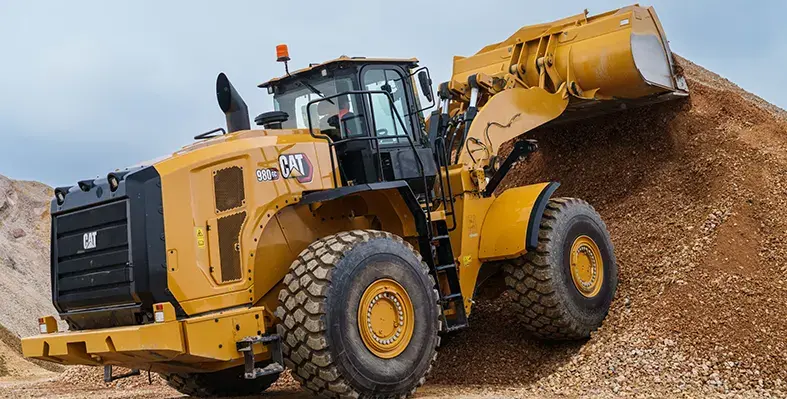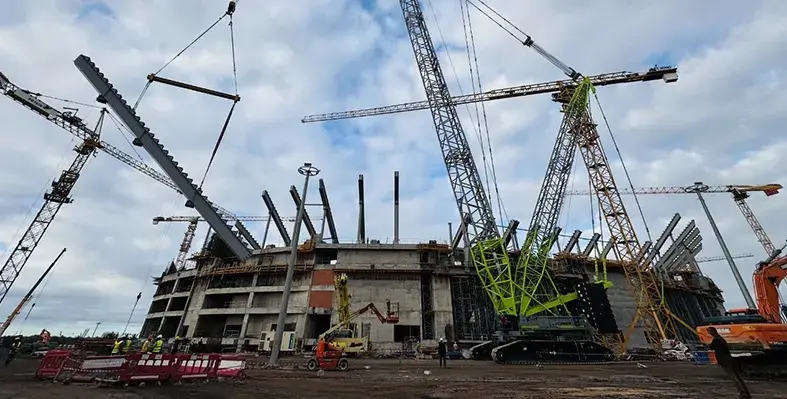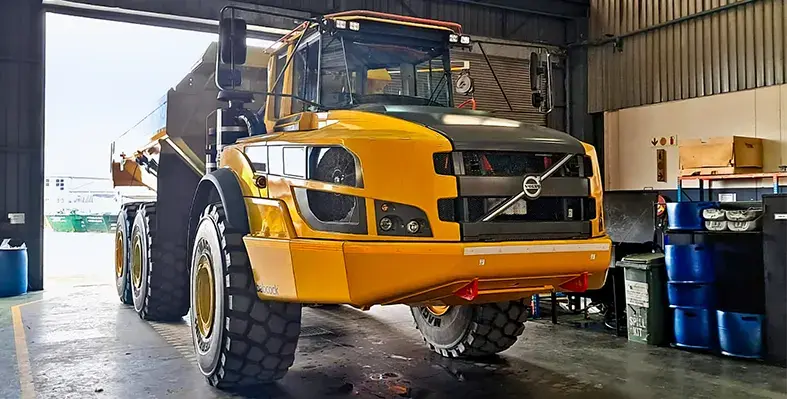Caterpillar has unveiled its new heavy-duty Cat 980 GC Wheel Loader
Easy to own and simple to operate, the new wheel loader provides an economical solution for a broad range of applications, said Frank Stadelmann, global product application specialist at Caterpillar.
“We’ve built the new 980 GC on a long legacy of high performance and highly reliable wheel loaders with proven components and integrated Cat machine systems,” he said.
“The loader’s simple user interface, intuitive controls and excellent visibility make for comfortable and efficient operation, even with less experienced operators.”
The 980 GC wheel loader offers low fuel consumption with an on-demand fan, load-sensing hydraulics, intuitive controls and Performance Series buckets.
“New features to this model, like our Engine Idle Management System (EIMS), minimise idle RPM and fuel consumption to help deliver low owning and operating costs,” said Stadelmann.
Adding to the full line of medium wheel loader choices, the new 980 GC is powered by the Cat C13 engine. The engine’s Cat Clean Emissions Module works in the background without impacting production.
The EIMS, Auto Engine Idle Shutdown, variable speed fan and load sensing hydraulics all combine to offer low fuel consumption and sound levels on the machine.
Its field-proven automatic planetary powershift transmission also delivers high reliability and long service life. Four forward/reverse speeds reach a maximum 39.8 km/h (24.7 mph) speed to quickly move about the site, and the well-known Electronic Clutch Pressure Control (ECPC) shifting system provides smooth, efficient gear changes in all operating conditions.
Available ride control improves operating smoothness over rough terrain while ensuring excellent material retention and increasing efficiency, and the optional limited slip differential axle increases traction in poor underfoot conditions.
The new loader also features convenient service points, one-piece tilting hood with swing-out radiator, and sight gauges for quick and efficient daily maintenance. Hard-to-reach pins have remote, conveniently grouped grease fittings for easy preventative lubrication. An optional Cat Autolube System boasts simple, one-button control and includes fault flash function to alert the operator to issues.
The new 980 GC is built on a legacy of high performance and highly reliable wheel loaders with machine components designed and manufactured to high quality standards. Caterpillar first entered the wheel loader market back in 1959.
The latest machine is also backed by the Cat dealer network to help maximise uptime by providing global parts support and trained technicians.
Read more:
Case Construction Equipment sees dynamic Africa, Middle East growth prospects
New Cat ECS 300 and ECS 400 for enhanced power control
New look for Volvo CE wheel loaders
Perkins showcases latest power system technologies at bauma










